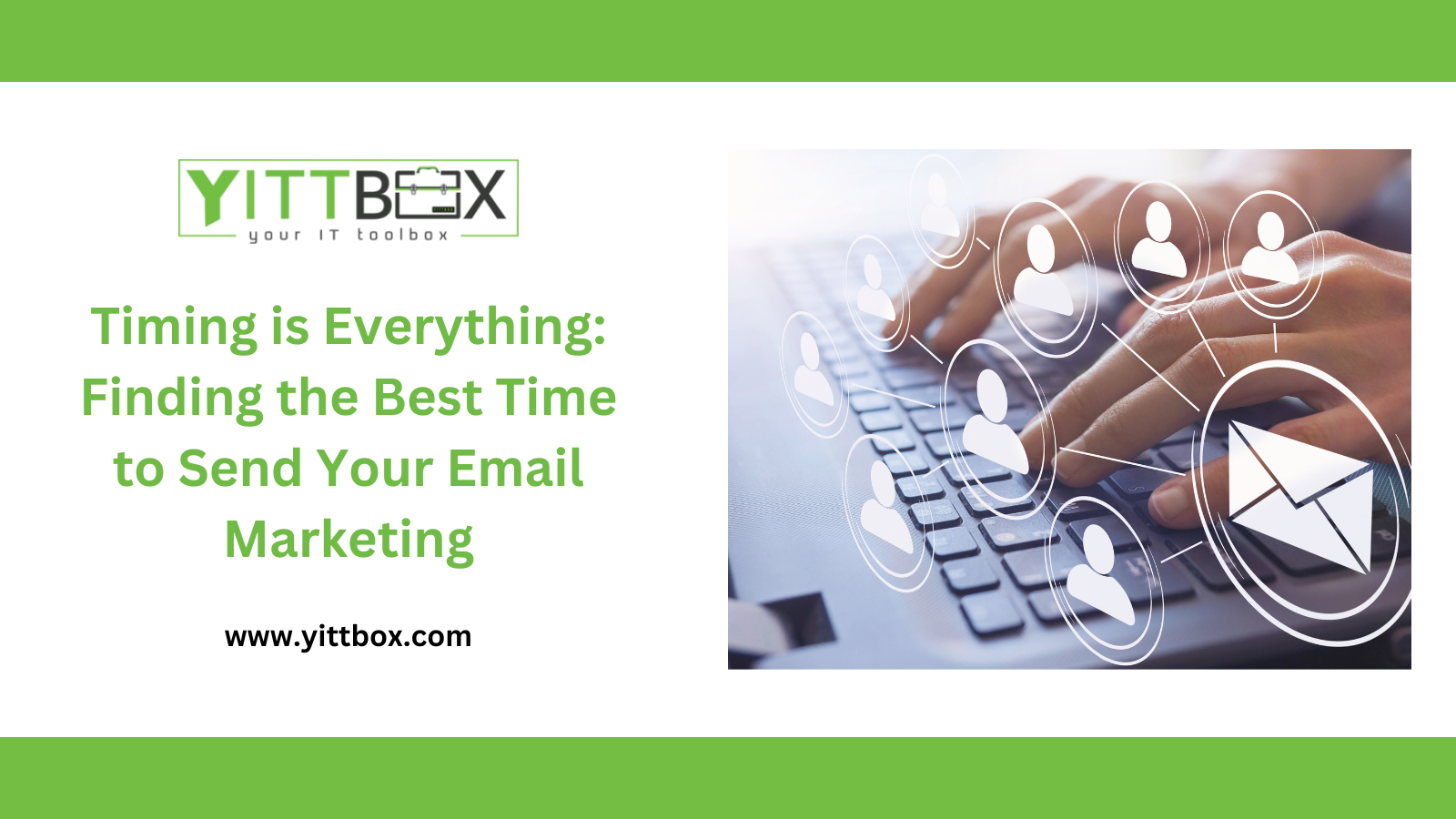Introduction to Timing is Everything: Finding the Best Time to Send Your Email Marketing
In the fast-paced world of digital marketing, one of the critical factors that can significantly impact the success of your email campaigns is timing. Discovering the optimal time to send your email marketing campaigns can boost open rates, click-through rates, and overall engagement. In this guide, we'll delve into the strategies and considerations for pinpointing the perfect timing to maximize the effectiveness of your email marketing efforts.
Understand Your Audience's Behavior:
The foundation of effective email timing lies in a deep understanding of your target audience. Analyze your audience's behavior by studying data such as when they are most active online, their time zone, and their response patterns to previous email campaigns.
Leverage Email Marketing Analytics:
Utilize the analytics tools provided by your email marketing platform to gather insights into the performance of past campaigns. Look for patterns in open and click-through rates based on the time and day the emails were sent. Identify trends that indicate when your audience is most receptive.
Consider Time Zones:
If your audience spans different time zones, schedule your email campaigns to reach recipients at a time that aligns with their local hours. Segment your email list based on geographic location to ensure that your emails land in inboxes during peak activity hours.
Test Different Time Slots:
Conduct A/B testing by sending the same email to different segments of your audience at various times. Analyze the performance data to identify which time slots yield the highest engagement rates. This iterative testing approach helps fine-tune your email timing strategy over time.
Day of the Week Matters:
Research indicates that the best day to send emails can vary depending on the industry. While Tuesdays and Thursdays are generally considered optimal for many sectors, it's crucial to test and determine what works best for your specific audience. Consider industry benchmarks but rely on your own data for the most accurate insights.
Peak Engagement Hours:
Identify the peak engagement hours during the day when your audience is most likely to check their emails. Typically, early morning or late afternoon slots are effective, but this can vary based on your audience's habits. Test different time slots within these windows to find the sweet spot.
Mobile Optimization:
With the increasing use of mobile devices, consider the mobile habits of your audience. Ensure that your emails are mobile-responsive, and schedule campaigns to align with times when users are likely to be checking their emails on smartphones or tablets.
Event-Driven Timing:
Capitalize on specific events, holidays, or industry milestones to time your email campaigns strategically. Plan ahead for seasonal promotions or special occasions that resonate with your audience, and align your email content with these events.
Consistency Builds Expectations:
Establish a consistent email schedule to build expectations among your audience. Whether it's a weekly newsletter or monthly promotions, a predictable schedule can train your audience to anticipate and open your emails at specific times.
Monitor and Adapt:
The digital landscape is ever-evolving, and so is consumer behavior. Regularly monitor the performance of your email campaigns and be ready to adapt your timing strategy based on shifts in audience behavior, industry trends, or changes in your product/service offerings.
Conclusion to Timing is Everything: Finding the Best Time to Send Your Email Marketing
While there may not be a one-size-fits-all answer to the perfect timing for email campaigns, a data-driven and iterative approach can help you refine your strategy over time. By understanding your audience, leveraging analytics, and staying adaptable, you can unlock the full potential of your email marketing efforts and ensure your messages are reaching your audience at the most opportune moments.







